Wall Oven: Why won't my wall oven bake?
A failed control thermostat can prevent the oven from baking on a wall oven that uses dials for the oven controls. On a wall oven with a digital display, a failed electronic control board or relay control board may keep the oven from working. A bad temperature sensor probe will also prevent the oven from heating. A broken bake element in an electric oven or a failed igniter in a gas oven can also cause a heating failure. For more troubleshooting tips, watch our electric wall oven won't heat video or gas wall oven won't heat video to figure out and fix the problem.
Many ovens have a thermal fuse or a thermal switch that protects the oven from overheating. The thermal fuse or thermal switch trips when the temperature in the oven gets too hot. After the device trips, the oven won't heat. If your oven uses a thermal fuse, you'll need to replace a tripped fuse because you can't reset the fuse. You'll also need to investigate the cause of overheating if the oven got extremely hot before the fuse tripped. A stuck relay on the electronic control board can cause the bake or broil element to heat constantly. Check the control board for a burnt spot or melted relay. Replace the control board if damaged.
If your oven uses a thermal switch, you can reset the switch by turning off electricity to the oven, removing the exterior back oven panel and pushing the red reset button on the back of the thermal switch. If the switch tripped during the self-clean cycle because excessive residue inside the oven caused the oven to overheat, then the oven may work properly after resetting the thermal switch. If the thermal switch continues to trip and the oven doesn't overheat, you'll likely need to replace the thermal switch because the switch is tripping at the normal oven operating temperature. If the oven overheats and trips the thermal switch after you reset the thermal switch, then you'll need to investigate the cause of the overheating as described above.

THESE REPAIRS MAY HELP SOLVE YOUR WALL OVEN PROBLEM
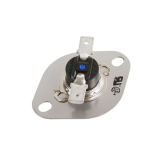
Reset the wall oven thermal switch or replace the thermal fuse
Many ovens have a thermal switch or a thermal fuse that protects the oven from overheating.
If the oven has a thermal fuse, the fuse trips when the oven temperature gets too hot. You can't reset a thermal fuse so you'll have to replace the fuse if it trips.
You'll also need to investigate the cause of overheating if the oven got extremely hot before the fuse tripped. A stuck relay on the electronic control board can cause the bake or broil element to heat constantly. Check the control board for a burnt spot or melted relay. Replace the control board if damaged.
If the oven has a thermal switch, you can reset the switch by turning off electricity to the oven, removing the exterior back oven panel and pushing the red reset button on the back of the switch. If the switch tripped during the self-clean cycle because excessive residue inside the oven caused the oven to overheat, then you can reset the thermal switch and the oven may work properly. If the thermal switch continues to trip and the oven doesn't overheat, you'll likely need to replace the thermal switch because the switch is tripping at the normal oven operating temperature. If the oven overheats and trips the thermal switch after you reset the thermal switch, then you'll need to investigate the cause of the overheating as described above.
Reset the wall oven thermal switch or replace the thermal fuse
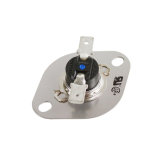
How to replace a wall oven thermal fuse
Is your wall oven not heating at all? It could be the thermal fuse has blown. This DIY repair guide gives easy-to-follow instructions on how to replace the wall oven thermal fuse.
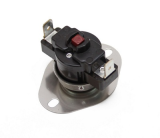
How to replace the thermal switch in a wall oven
When a wall oven isn't heating at all, the problem could be the thermal switch. If you've reset the switch but the oven still won't heat, this DIY repair guide and video explain how you can replace the oven thermal switch in less than 60 minutes.
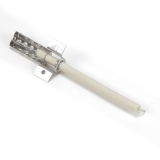
Replace the wall oven igniter
Most gas ovens have a glow-bar oven igniter and a safety gas valve. Those components are connected in a series-type electrical circuit. When the glow-bar oven igniter is hot enough to safely ignite the gas, the safety gas valve opens. Replace the oven igniter if doesn't glow, or if it glows but doesn't get hot enough to open the gas valve. Some ovens have a separate igniter for the bake burner and the broiler burner, which operate on the same principle.
Wall oven igniter
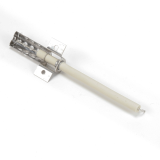
How to replace a gas wall oven igniter
If the wall oven burner isn't lighting, the igniter might not be getting hot enough to open the gas valve and light the gas. This DIY repair guide and video give step-by-step instructions for replacing the igniter.

Replace the wall oven control thermostat
The oven thermostat is a temperature-controlled switch that controls heating inside the oven. Replace the thermostat if it doesn't maintain the oven temperature incorrectly, if it fails to turn on to the oven burner to heat the oven, or if it fails to turn off the burner when the oven is at the set temperature.
Wall oven control thermostat

How to replace a wall oven control thermostat
When a wall oven's temperature isn't hot enough or if it's too hot, the control thermostat could be the problem. This DIY repair guide shows how to easily replace the oven control thermostat.

Replace the wall oven bake or broiler element
In an electric oven, the bake element at the bottom of the oven and the broil element at the top of the oven provide the heat for baking and broiling. Replace them if they're broken or if the oven isn't heating properly.
Wall oven bake or broiler element
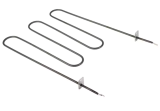
How to replace a wall oven broil element
Is the broil element not heating in your electric wall oven? This DIY repair guide shows how to replace a faulty oven broil element in 4 quick steps.

How to replace a wall oven hidden bake element
A wall oven bake element not heating could mean there's a break in the element, even if you see no damage. This DIY repair guide and video show how to replace the hidden oven bake element in 30 minutes or less.
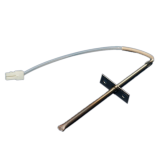
Replace the wall oven temperature sensor probe
The oven temperature sensor probe detects the actual temperature in the oven cavity. Replace it if it's not detecting the temperature properly, in which case the oven doesn't maintain the temperature you set. A complete failure, in which the sensor probe doesn't detect any temperature at all, usually triggers an error code on the electronic oven control board.
Wall oven temperature sensor probe
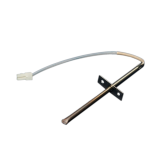
How to replace a temperature sensor on a gas wall oven
If a gas wall oven isn't getting hot enough, or if it's too hot, the temperature sensor could be at fault. This repair guide and video show to replace the oven temperature sensor.

How to replace a temperature sensor on an electric wall oven
When an electric wall oven's temperature is too hot or isn't hot enough, the problem could be the temperature sensor. This DIY repair guide and video show how to replace the oven temperature sensor in 6 easy steps.

Replace the wall oven electronic oven control board
The electronic oven control (EOC) board governs the timing and execution of oven functions such as baking and broiling. It's usually in the control console and often has a digital clock on the front of its housing. Replace the electronic control board if it doesn't light up when it's supplied with electrical power, if it doesn't operate properly or doesn't properly send voltage to the bake or broil element (in an electric oven) or burner (in a gas oven).
Wall oven electronic oven control board
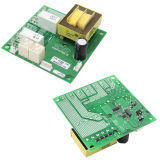
Replace the wall oven relay control board
Some wall ovens have a relay control board that's separate from electronic control board. The relay board has electrical relays that control voltage going to major loads such as the bake element or a surface element, based on signals from the control board. Replace the relay control board if it fails to properly control voltage to a component.
Wall oven relay control board
Most common symptoms to help you fix your wall oven
Choose a symptom to see related wall oven repairs.
Main causes: bad oven door lock assembly, faulty electronic control board, wiring failure…
Main causes: broken bake element, bad bake burner igniter, tripped thermal switch, control system failure…
Main causes: faulty oven temperature sensor, control system problem, weak burner igniter, damaged oven element…
Main causes: lack of gas supply, broken igniter, tripped circuit breaker, broken oven element, tripped thermal fuse, con…
Main causes: lack of electrical power, bad electronic control board, faulty oven control thermostat…
Main causes: broken broil element, faulty broil burner igniter, control system failure…
Most common repair guides to help fix your wall oven
These step-by-step repair guides will help you safely fix what’s broken on your wall oven.
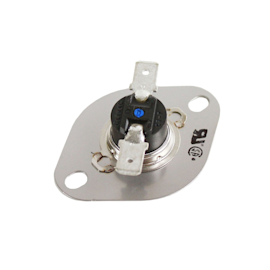
How to replace a wall oven thermal fuse
The thermal fuse trips to prevent the over from excessively overheating. The oven won't heat again until you replace the…
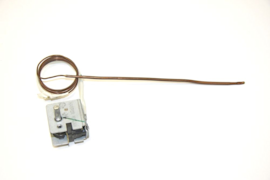
How to replace a wall oven control thermostat
Get your oven temperature under your control by replacing a faulty oven control thermostat.…
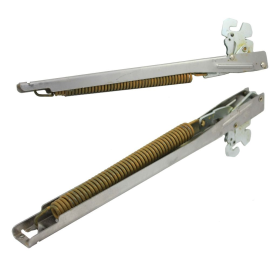
How to replace wall oven door hinges
If your oven door flops open fast, it's time to replace the hinges. Follow these step-by-step instructions to do it your…
Effective articles & videos to help repair your wall oven
Use the advice and tips in these articles and videos to get the most out of your wall oven.

Get tips on completing essential holiday cleaning tasks to brighten your home.…

Learn about all the convenient features on our Sears PartsDirect website that make your parts purchases easier.…
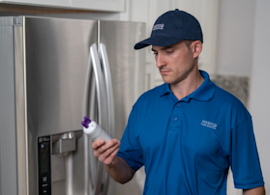
Get answers to frequently asked questions about Sears and Sears PartsDirect.…
